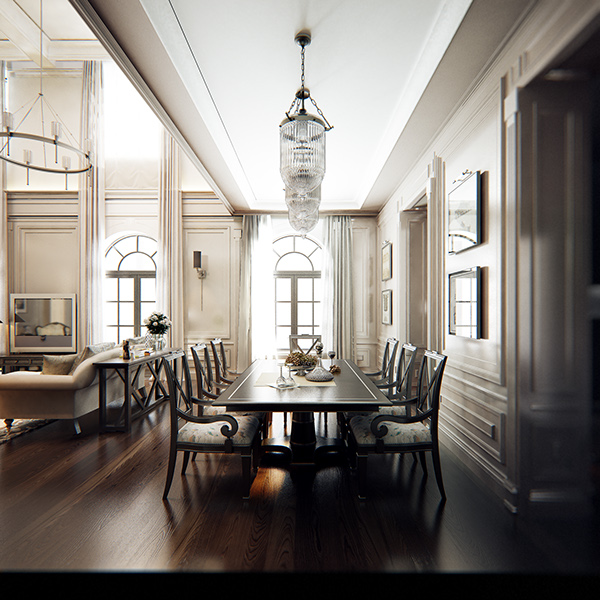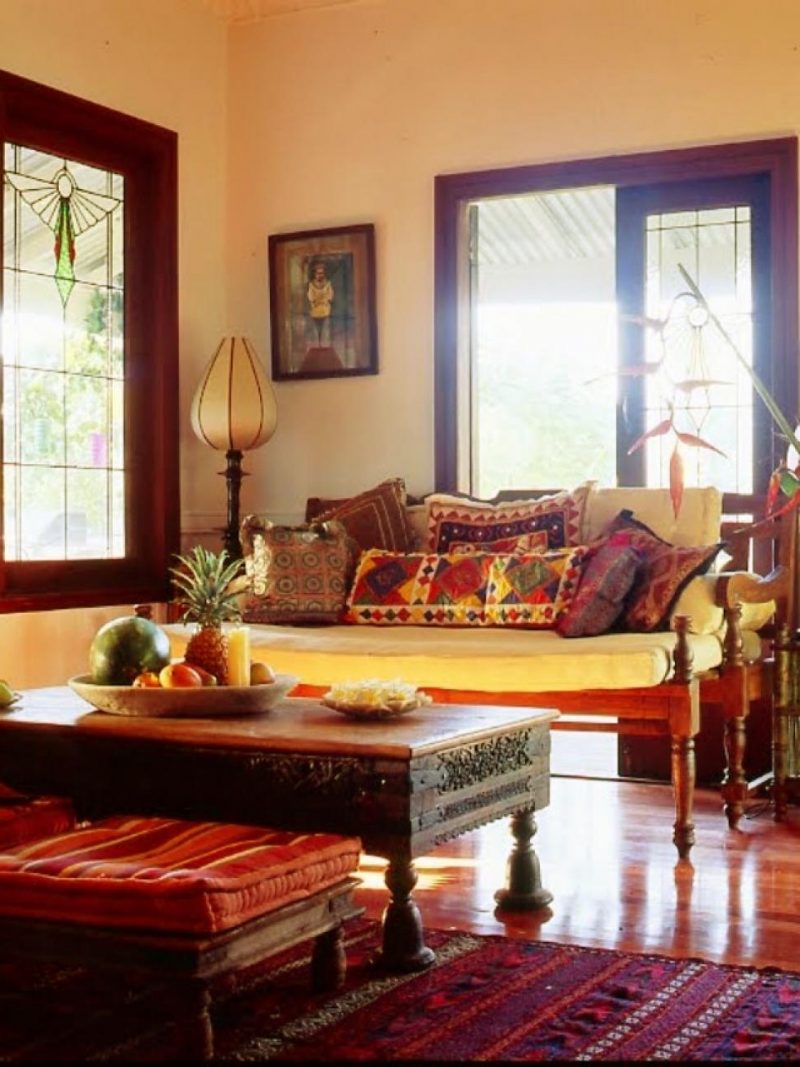
When it comes to decorating, there is an enormous number of interior styles to choose from. Designers and decoration enthusiasts have come up with a seemingly endless list of possible style combinations — and they often given a precise name — which could be confusing to many people.
The important thing is that you understand the characteristics of the most popular styles, so you can sort out which ones might be yours. Keep in mind that you are won’t be sacrificing your own tastes, as you could (and should!) add your personal touch when you apply any style to your home.
Let’s start with the basics…
Here’s a list of the most prevalent decorative styles and what might they look and feel like in your home. That way you can start narrowing down to the perfect style for you.
American Colonial:

Most noted for woodwork and trim used widely throughout the space.
Rustic:

The original “eclectic” look that heavily emphasizes nature. Main materials are wood, reclaimed lumber and stone. Also think rattan, bamboo, paper, clay, etc. Usually incorporates wooden beams and columns as well as hardwood or stone flooring.
Art Nouveau:

Picture hardwood, both stained and varnished, and lots of it. Also Tiffany lamps and stained glass windows, colors that give light (sage greens, browns, mustards and lilacs), and furniture that incorporates stylized flowers, leaves, etc.
 Your walls and floors will never be the same once they meet these funky & fun wall stencils
Your walls and floors will never be the same once they meet these funky & fun wall stencils
Wallpaper is making a comeback big time, wall decals are hot, but my favorite way to make a surface my own is with stencils. You... Read more
Art Deco:

There is often layered lighting, to create the right atmosphere, shiny chrome or brass fixtures, geometric shapes, lacquered furniture and polished wood. (Think of The Great Gatsby – novel or movie)
Country:
- English Country: Rustic, relaxed and comfortable. Classic furniture and patterns; typically considered eccentric. Prominent or floral fabrics. Walls are usually wallpapered, and china is arranged on a wall or in cabinets. Picture landscape paintings, crystal candle holders, vases of fresh flowers, dark-stained chests and pine bookcases.

- Shabby Chic: Has a soft, feminine feel. New items are distressed to achieve an antique appearance. Shabby Chic furnishings show signs of wear – think lovingly time-worn. White and pastel colors are most prominent. Decorating tip: Anything with roses goes.

- French Country: Rustic, old-world and welcoming. Typical features include fireplaces, wood beams, stone or brick floors, furniture with carved details and rugs. And flowers, flowers, flowers.
Gothic:

Traditionally, this style features dark colors for the walls, ceilings and floors. A Gothic space usually has large windows in the Palladian or pinnacle style. There are often enormous candelabras and chandeliers.
Victorian:

Gained popularity during the industrial Revolution, when many people chose to use items that had previously only been available to the aristocracy. Picture spaces with as many pieces of furniture, fabrics and accessories as possible (attempts to showcase new cultural interests and status). Colors: rich walnut and mahogany browns, black, and shades of plum, mustard yellows and gold. Fabrics: silks and velvets. Patterns range from plants and animals to geometric patterns. Furniture is typically opulent and extravagant.
Indian:

Warm colors — think spices from India (curry, cardamom, garam masala, cumin, etc.) — in burnt shades rather than bright colors for a warm look. Patterns and textured finishes abound. Tiles, marble and granite floors are traditionally found in Indian style homes. For decoration: statues made from bronze, brass, wood or gold, and plenty of dark, solid wooden furniture.
Moroccan:

Rich colors of the Middle East, dynamic contrasts and traditional patterns. Reds and oranges (sunset), greens and blues (Mediterranean Sea), golds, light browns and yellows (desert), as well as silver. Abundant use of terra cotta and exotic plants. Mosaics for sinks, coffee tables, and mirrors. Wool rugs, carved wood furniture, bright cushions, Moroccan lamps and silk curtains are often found in homes of this style.
Industrial:

Popular for decorating lofts and old buildings converted into living spaces. It is important to create the illusion of rough surfaces and to use materials that suggest an industrial past. Walls or surfaces unfinished. Use of wood, steel and other metals. Think shades of gray (not 50 Shades of Grey — let’s stay focused interior decorating for now). Exposed bricks, steel beams or columns, exposed concrete and unfinished wood are all hallmarks of this style. Lighting often includes standing floor lamps and pendant lamps.
Japanese:

Simple and clean with a natural essence. Line, form, space, light and material are conceived in a very elemental way. Imagine walls that can be slid open to allow a continuous flow between the interior and exterior. The use of sliding doors, transparency, and white and light brown colors are prevalent in this style.
Spanish:

Related to rustic villas, sunny patios and an old-fashioned sense of family. Walls finished with a smooth-touch stucco texture or faux finish. Colors: earth tones such as taupe, burnt orange, chocolate brown, indigo blue, deep red and mustard yellow. Carpeted floors (generally the flooring surface is continuous throughout the entire house). Use of leather and distressed wood furnishings. Some common dark wood choices include mahogany, walnut, ebony, butternut, teak and rosewood.
Scandinavian:

Wood floors except in the bathroom. White walls. Clean lines. Lots of light. Neutral colors. A very chic, modern look.
Traditional European:

Traditional interior design reflects classic European décor, with wood tones, architectural details and elegant furnishings. Furniture: wing-backed chairs, claw-footed tables, and curved furniture pieces that reflect the 18th and 19th centuries (think Queen Anne or Chippendale style).
Modern Minimalist:

This style is a form of extreme accuracy where nothing is too much, without heavy backgrounds. The emphasis is on simplicity, the colors may be dull or bright, in any case there will be flashy colors. Pieces are often geometric shapes — square, rectangular, round — but the surfaces are clean, with no scenery, no details. This style is made to showcase simplified forms.
Maverick:

It is part of modern style, its approach is very inventive, unusual and unconventional. Young, explosive, inventive, with not respect for the rules. Structure can be obtained by joining pieces and overlapping volumes. Colors can be randomly chosen even for the same room, just as part of the eccentricity of this style.
You can get a description of the most common styles on many other websites. But…
What are your favorite interior design styles? And where you do find your inspiration?


I like Mexican aesthetic principles, which actually can be applied to any ethnicity or style. Basically, instead of choosing a color scheme or theme and rigidly sticking to it, you strive for balance. You have large areas of light-colored neutral (but often subtly textured) wall and dark floors, and on this canvas you have a bit of everything, but always with its counterpart. For every rustic and simple object you need an intricate one. For every textured object you need something smooth. Matte meets glossy. Fantasies of artifice balance natural materials in the rough. Light balances dark. Bursts of intense and varied color (with none predominant) concentrated here and there, relieve the neutrals. (On the floors this includes rugs and the occasional ornate tile, and on the ceiling lamps and other hangings do the job.) The one thing not balanced with its counterpart is hand-made, or at least hand-decorated objects–the more the better. Even the walls should look plastered by human hands.
My husband and I don’t really have a style per say. We like things to feel warm and cozy, we like bright colors, we like vintage things, we like weird things, and we especially like things that are free or almost free! I feel like our decorating style is “hand-me-down mish mash” because with the exception of our couch ALL of our furniture is hand me down.
We’re actually currently house hunting and it’s so disappointing when we walk into a home built in the 50s that has a super modern kitchen / bathroom. We’re looking for original wood cabinets, Formica counter tops in weird colors, and full tiled bathrooms!
You’d probably be listed as “Maverick”. But never mind labels, you have YOUR style, and you know it when you see it.
I think I fit into the “Maverick” category. I used to call it, “Bohemian Gothic Nerd,” but I recently heard the term, “Granny Chic” and think that feels better. Basically, I want my house to look like a brighter, curated version of my grandma’s very 1960’s/70’s house. My mom is an interior decorator and she said I like, “Colors we would have called gay in the 70’s and a high aesthetic.” So I guess “gay and high” would work too. We close on a house next week and I can’t wait to get my hands on it!
Thank you so much! I’m a lost cause when it comes to design and well style in general so this list is a big help!
1 Wow, these pictures and designs are look too beautiful, with all these ideas i add one more thing that we also use decorative concrete in our room walls for interior designing. It is also look beautiful.